#i really like colubrids in general
Note
what are your fav types of snakes?? :0
HI MOSS 🩷🩷
well im very partial to boas and pythons as ive kept them as pets for a long time


[coastal rosy boa (photo by connor long) & ball python (photo by musikanimal); both from wikipedia]
as a californian im also very partial to kingsnakes and i think it's cool that they eat rattlesnakes!!! they're naturally resistant to rattlesnake venom & are super strong constrictors. they make solid pets bc they're pretty easy to take care of & don't contribute to exotic pet trade issues since they're native to much of the americas

[california kingsnake, photo by connor long & wikipedia again]
but truly my absolute favorite is the same as my brother's-- the green anaconda 💚💚💚💚💚

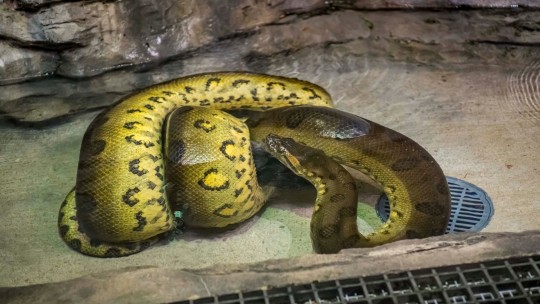
[photos by lutz dirksen and the milwaukee county zoo (that lovely anaconda is named olive!!) respectively]
anacondas are also known as water boas bc they spend a lot of time swimming and just vibing in the water; they're also one of the heaviest & longest snake species (snakes are measured in a lot of different ways but for sure anacondas are chunky mfs).
they're native to south america, particularly the amazon river, & are also subject to a lot of weird fear mongering bc of various movies and animal myths. obviously they're dangerous and similar to burmese pythons have had issues in places like florida where the exotic pet trade has led to invasive species taking over niches but there are not a bunch of car-sized snakes crawling around the florida suburbs, unfortunately for the news outlets using photoshopped images of them. anyway. i think they're beautiful and really cool.
im also obviously very fond of venomous snakes like pit vipers & cobras-- did you know some cobras play dead like possums??? they look really goofy when they do it 😄 also idk if you're familiar with "The Brahmin and the Mongoose" or rikki-tikki-tavi (🤮 rudyard kipling) but mongooses are known for being able to predate on cobras bc they can bite them on the head. wild!!!!
ty for letting me infodump <3333
#asks#boygirltitties#snakes#sorry i really went for it with this it wasnt gonna be this long and then i thought about cobras for too long#also fun fact about snake taxonomy and just taxonomy in general:#lots of genus/families have names that sre just kind of thrown around/unspecific#bc people dont take note of specific evolutionary differences between elapids and rear-fanged colubrids when naming snakes#etc. for lotssssss of animal names#but yeah cobras arent like. well theres a lot of snakes called cobras
4 notes
·
View notes
Note
if youre willing to (and it would be fun) would you list some behavioral differences you notice among short-tails, balls/royals, and other common pythons? id love to hear how they compare, esp since you said your experience with short tails is different than the common idea theyre bitey/aggressive.
Sure thing, this is a fun question! I love pythons, what an awesome family.
Ball pythons:
My goodness, the most docile, sweet-natured snakes in the world. With most ball pythons, they will not even try to bite you for anything in this world.
They hide their faces when they feel scared.
Love to climb! I don't know a bp who won't take advantage of climbing branches.
Burrowing can be either an individual preference or a sign something's up with husbandry. Some bps just like to burrow, and with some it's a sign that their humidity is too low or heat is too high.
Fussy eaters. If anything's up with their husbandry, they often won't eat.
Short-tailed pythons:
Their fuse is a lot longer than people assume it is, and they're good communicators. Hobie's taken one shot at me so far, and it was this morning after he dumped most of his water (from his huge giant water bowl) in his substrate and burrowed down in a wet patch. I didn't trust him (given his background) to be great at knowing he should move to a dry area, so I had to dig him out to replace the substrate. After waking him up, digging him out, and replacing substrate, he snapped at me once, and only after hissing, tail-wagging, and even bluff-striking. From his perspective, he'd exhausted all his options and he'd made himself perfectly clear!
They can and will strike sideways. This throws a lot of people off because most snakes just won't do that.
They're very still snakes and can move fast, so a lot of people get startled by how they move.
They'll huff and sigh to tell you how they're feeling.
Brilliant eaters.
They love water and burrowing. As my Hobie example proves, this can sometimes combine to make Problems.
Antaresia pythons:
Temperament can be a mixed bag as babies but adults are usually calm and sweet.
They'll rear up when they're upset, like colubrids!
Good eaters generally but they can be fussy, especially with babies. Sometimes you'll have to scent their food with lizard scent to get them interested.
Adore climbing and hanging from branches!
They'll burrow occasionally for fun.
Carpet pythons:
Temperament can vary between species, the more arboreal ones are a bit more defensive. Like short-tails, they have a bad reputation but a lot of them are super easy to handle.
Despite that reputation, they're also really good communicators. They'll rear up, open their mouths, and give you every indication they can think of that they're about to bite you before they do it.
These snakes would live on their climbing branches and perches!
Food-motivated to the extent that I honestly wouldn't even try to handle one after dark.
I just love pythons. They're such a fun, diverse group of snakes to work with!
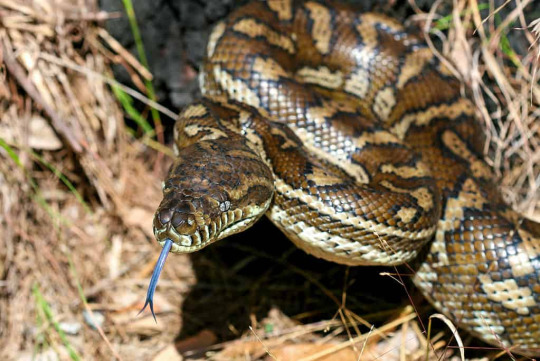
171 notes
·
View notes
Note
I wish people weren’t so afraid of spiders and snakes to see them as inherently dangerous animals. As far as i can tell California doesn’t have any spider thats dangerous except to children (some recluses and widows including it seems the black widow and brown recluse. And yellow sac spiders which can have a nasty bite). Not to mention, a spider climbing on you in a flood is just trying to live. If you just stay calm and get to dryish land you can save them without much danger to yourselves.
California also doesn’t seem to have any venomous snakes except a sea snake and rattlers (ok there was a rear fanged colubrid but those cant even really envenomate unless its a feeding strike) None of which are species really known for going out of their way to hurt people.
Fleas are also not likely to be a major issue unless you have pets, except for potentially spreading illness. Human fleas aren’t all that common and the common species don’t actually like humans.
Anon I don’t know how to tell you this but fleas absolutely will bite humans if they’re hungry and low on their preferred host and a flood situation fits the bill for them to absolutely take more than a few opportunistic bites. And I hate to tell you this next part, but the Black Plague has been well documented as endemic to parts of california in the modern day. I’m sure it’s anywhere that fleas hang out really, but fleas are indeed a concern.
Also worth noting that in the case of phobias, the fear isn’t often rooted in a rational aspect or true presence of danger as much as it’s rooted in just psychological dread towards things that move different than humans and especially towards things that move different than humans very very quickly. Humans also tend to panic if any given animal is suddenly climbing on them. And humans make very poor decisions when panicked in an already stressful situation.
not to mention the fact that black widows and brown recluse spiders are absolutely capable of being threats to human health, and even if they’re really only fatal in children generally speaking, there are as a matter of fact statistically at least a few children in the flooded parts of california. And while your chances of encountering a flood rattlesnake or being bitten by a sea snake are low, they are never zero. Love and light.
#Listen anon I am a very big fan of all of these animals and removing stigma from them#but there are certainly situations where they are a risk to humans and in general most of these are best observed from a distance#rather than climbing you like a tree to take shelter in your hair
49 notes
·
View notes
Text
mexican black kingsnakes are so pretty
11 notes
·
View notes
Note
Hi! My friend (who is very smart and good at snakes) got a snake, and she's just the best. and it got me wondering: What is socializing a snake like? Do you even socialize a snake, or do they act one way their whole lives? What does an unsocialized snake act like??
Heyas!
It, ah, it kinda depends on the snake in question, their age, and their experiences. If we're talking corn snakes, socializing is a pretty simple process that usually just involves holding them for a bit every so often. Done. Easy.
Corn snakes don't have the same kind of intelligence or desire for social interaction that we humans have. They don't seek the company of their own kind outside of mating purposes and they don't form social bonds with other species. Like, humans are so social that we not only form bonds with other non-human species but we will bond with things that aren't even alive, like cars and robot vacuums.
The act of socializing a snake isn't really getting them to form a bond on their end to us so much as it is acclimating them to human contact and getting them to understand that we're a big weird warm creature that isn't going to eat them and will in fact often provide food. While we bond with them, we learn their body language and can adjust our behaviors subconsciously in ways that minimize their stress response and maximize their perception of us as a non-threat. So great is our desire to pack-bond with basically everything around us that we'll change our own behaviors to be less threatening and not even realize we're doing it.
From the other direction, corn snakes have been bred in captivity for many generations and there is significant evidence that the experiences of an individual will affect the DNA passed on to their offspring. That's how birds and monarch butterflies know where to go when they migrate. This genetic memory hasn't been specifically identified in corn snakes as far as I know but it's reasonable to assume that it probably happens, because we have observed that a corn snake who is calm with humans will usually have offspring that are calm with humans.
Furthermore, most adult colubrids are pretty chill in general. They don't have a ton of predators once they reach a certain size and as humans we neither smell nor behave like any of those predators. If you were to catch a corn snake in the wild, they'd probably be fairly docile, which is why they became such popular pets in the first place.
Finally, it's hard to say exactly how an unsocialized corn snake will behave when introduced to humans. They might musk, shakey-tail, bluff strike and flatten their heads like a rattlesnake. They might flail and try to escape. Or they might be totally cool. The same is true of socialized corn snakes. Sometimes they'll be nippy, flighty babies and grow into very calm and sweet adults. Very rarely you'll get a baby who sucks and grows into a defensive or even aggressive adult, even with repeated positive experiences. We can do our best, but sometimes nature is stronger than nurture.
I will say, as a final final note, that a sudden unexpected behavior shift in a snake can be a sign of illness or injury, so if your usually calm and friendly snakey pal suddenly turns into a demon serpent that means you should get them seen by a reptile vet.
#My high school yearbook class formed a deep attachment to a bottle of tapatio#He had a wife who was a bottle of cholula#they had a sauce packet baby#humans are weird man.#snake#snakes#reptile#reptiles#reptiblr#corn snake#corn snakes#snake behavior#corn snake behavior#snake keeping#snake care#answers to questions#text post#long post#oh I'm sorry did you want an answer here have a novel
57 notes
·
View notes
Note
Legitimate question because I'm interested in reptile breeding (not for profit, I'll probably keep most of the babies) how do you make sure you aren't inbreeding? Do you keep charts? Do you screen for genetics like mammal breeders? Just curious
Ive been trying to find out where to start on this basically all day. I feels like theres so much i have to infodump to explain my decisions.
Tl; dr: i do not consciously pair related animals, except in one circumstance- i will explain below.
Keeping in mind that my explanations are very heavily centered on the ball python breeding community, here's the background:
Nearly no one keeps track of parentage in ball pythons because it is seen as unimportant. This is due to some different factors:
The belief that heritable issues are very rare, even with inbreeding, and past experience has shown inbreeding doesn't really cause issues.
The belief that few things other than morph (color/pattern) are inheritable (ie. Many breeders do not consider temperment to pass on)
And, from my view point, it's to hide inbreeding, because even though its not looked down upon in general, we do know it tends to make less fit animals, and has the potential to create problems, even if they are rare.
Moreso the 1st than the others.
As far as I know there isnt any kind of genetic screening available for pythons, certainly not anything affordable and accessible 😭 theyre still working on the kinks for ball pythons, though i hear corn snakes are coming along nicely for that and its been expanded for many colubrids. They can take sheds and evaluate for morph based on parents iirc.
Personally, i don't have to keep track of lineage in any formal way because i have so few. I only have 17 ball pythons, two of which are related males, and two of which are nonbreeding/pet only males. That leaves me with no potential for inbreeding, unless i was to do something weird with the offspring of the related males, which isnt necessary or part of my breeding goals. When i start breeding the same male to multiple females, i will certainly keep better track, but its not really that urgent because the breeding males i have dont have many morphs that overlap, again aside from the related males.
Even though it isn't necessarily seen as problematic, i just cant justify inbreeding. The circumstances people typically inbreed are as such:
They dont see a problem with it, therefore it isnt unethical- for me, i am aware of the potential harm it can cause.
No one else is working on the recessive project they have, so they cannot find mates to breed with their snakes- i ended up with 2 breeding pairs because i really wanted to avoid inbreeding
They want to save money, so making a clutch and pairing a brother and sister is cheaper than buying a whole snake, typically- doing things in line with my ethics is more important to me than saving a bit of cash.
Theyre working to prove out a gene. This is where my exception comes in.
When trying to prove a new morph out, in order to have it accepted as a morph by the bp population, eventually you're gonna have to breed it back to its parent.
Take Whiskey for example.

She is an imported ball python. Her mom was roaming Africa, got caught, laid eggs, got released, and those eggs were incubated, and Whiskey popped out. Because she is not from a known captive animal, despite the fact she looks almost identical to mahogany, I cannot call her that. I will need to prove her out to make sure her pattern and color are not simply flukes, that it produces the same effect as mahogany, and that pairing her with a mahogany creates homozygous mahoganies.
Here's how most people do it:
Take the import, and breed it to a recessive gene or a normal. This will enable any offspring to be readily identifiable as similar or dissimilar to the parent. It will also prevent other morphs from interfering with the look of the individuals.
Hold back an offspring of the opposite sex to grow out, preferably one that looks like the import parent. However, if no offspring look like the parent, it could be a recessive gene, so a normal may be necessary to hold back.
Pair the offspring to the parent, await results. You get babies that look like the import, congrats you have a new morph.
Now, sinxe Whiskey looks so similar to some lines of the mahogany morph, and because some folks said she could possibly be a chocolate, i made a different move to prove her out, to hopefully avoid inbreeding through the usual procedure. I bought a chocolate mahogany male. If the offspring look like super mahoganies or super chocolates, then i have a very clewr answer. And if not, then I'll likely just have to hold back a male offspring that looks like Whiskey and breed her to him. 🤷♀️ there isnt really a different way to avoid inbreeding in the case of proving out new morphs.
Does this answer the question? XD
64 notes
·
View notes
Note
for specificity im looking into snakes. I had a ball python as a child but after a few years he escaped and i havent had any personal pets since. the thing is im 21 and i know id like a larger snake but not an advanced snake. ive poked around on morphmarket community a bit but i still dont even know which grouping (retics/boas/pythons//) im attracted to yet. So what are your forum top picks? where do you go the most and why? why some over others?
continued: forum anon - for clarification when i mean beginner-ish snake, i mostly mean handleability and heartyness (if irc you mentioned a species where 1 regurge can turn into a vomit starvation spiral??). im ok with larger equip setups and more expensive animals as im not planning on getting a snake for at Least another year and want to have a vet fund and predictable enclosure set up first. thank you for spending your time answering questions! youre a good teacher and im glad i happened to follow u!!
Ok this part is me!:
A general group is Positive Pythons. It’s okay, very broad.
Blood and short-tail pythons: Blood Pythons
Arboreal Colubrids is a fun general colubrid group
Amazon tree boas (a secret love of mine): amazon tree boa keepers & breeders
Super Dwarf Retics: Reach Out Reptiles — this is a breeder’s page, but I really like him and he has a podcast and a youtube channel FULL of information.
Let me see, I also follow a lot of obscure colubrid pages but this may not be what you’re looking for. A lot of species, other than corns and balls, only have one or two groups for them, so I would just join them all! I think I’m in like over a hundred groups lol.
For regurging, this is a big problem in imported emerald tree boas, but can still lead to problems in healthy CBB snake if they are not given special care after. If a snake regurges, let it rest 3 weeks before offering food again, and make it a smaller meal than usual. Just go slow with it and it should be okay! If regurges persist, it could be a more serious health problem than a one-off mistake. Having an exotics vet is a life saver.
10 notes
·
View notes
Note
May I please ask what snakes the members would be as nagas? Or just as snakes in general? Tysm!
I did snakes, if that’s okay! I absolutely adore snakes, but a lot of these are venomous and dangerous. Remember when dealing with snakes: if red touches yellow, it’ll kill a fellow, but if red touches black it’s a friend of Jack!
Xemnas - king cobra - a venomous snake species in the family Elapidae, endemic to forests from India through Southeast Asia. It is threatened by habitat destruction and has been listed as vulnerable on the IUCN Red List. It is a dangerous snake when agitated or provoked that has a fearsome reputation in its range, although it is typically shy and avoids confrontation with humans when possible.
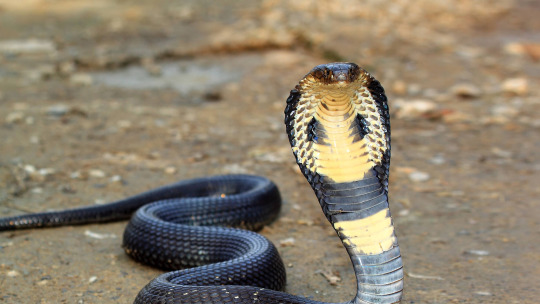
Xigbar - black rat snake - Rat snakes live in a variety of habitats; some overlap each other. Rat snakes are excellent climbers and spend time in trees. It is a nonvenomous snake that, when startled, they may freeze and wrinkle themselves into a series of kinks. If they feel further threatened, they may flee quickly or tail vibrate.
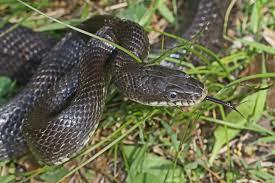
Xaldin - eastern diamondback rattlesnake - a species of venomous pit viper in the family Viperidae. The species is normally found in the southeastern United States. It is the heaviest, but not the longest, venomous snake in the Americas and the largest rattlesnake.

Vexen - cottonmouth - As an adult, it is large and capable of delivering a painful and potentially fatal bite. When threatened, it may respond by coiling its body and displaying its fangs. This is the world's only semiaquatic viper, usually found in or near water, particularly in slow-moving and shallow lakes, streams, and marshes.
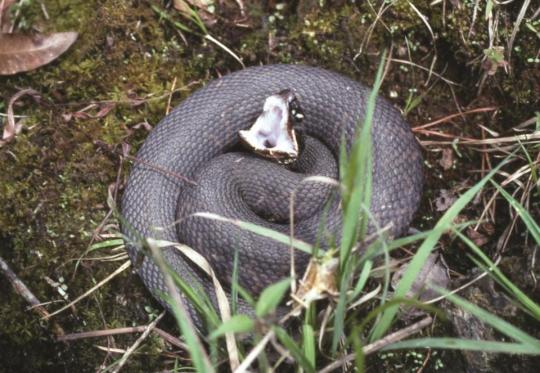
Lexaeus - ball python - Like all other pythons, it is a nonvenomous constrictor. This is the smallest of the African pythons and is popular in the pet trade, largely due to its small size and typically docile temperament. No subspecies are currently recognized. The name "ball python" refers to the animal's tendency to curl into a ball when stressed or frightened.

Zexion - formosan odd-scaled snake - shimmers with rainbow iridescence. The Formosan odd-scaled snake is found in Taiwan and the southern islands of Japan. It is harmless to humans and spends its time hunting worms, frogs and other small prey. The species is nocturnal, but put it under light and its whole body dances with color!
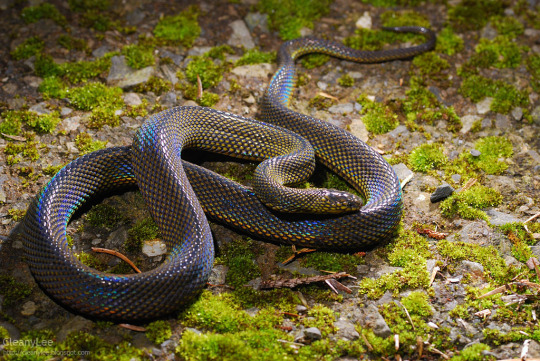
Saix - ring-necked snake - is a harmless species of colubrid snake found throughout much of the United States, central Mexico, and southeastern Canada. Ring-necked snakes are secretive, nocturnal snakes, so are rarely seen during the day time. They are slightly venomous, but their nonaggressive nature and small, rear-facing fangs pose little threat to humans who wish to handle them.

Axel - corn snake - North American species of rat snake that subdues its small prey by constriction. Their docile nature, reluctance to bite, moderate adult size, attractive pattern, and comparatively simple care make them commonly kept pet snakes.
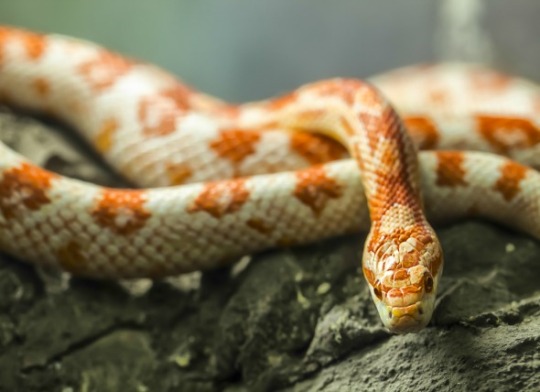
Demyx - banded sea krait - a water snake found in the Indo-Pacific ocean. Though this snake is an amphibious species that needs to come to land to drink fresh water and to breed, it has several adaptations for life among the fishes. Its tail has flattened to a paddle, it has valved nostrils to keep salt water out while swimming, and perhaps most impressive of all, it has venom that is far more powerful than that of rattlesnakes. It needs such fast-acting, potent venom to hunt speedy fish.

Luxord - common european viper - They are not regarded as especially dangerous; the snake is not aggressive and usually bites only when really provoked, stepped on, or picked up. Bites can be very painful, but are seldom fatal. It feeds on small mammals, birds, lizards, and amphibians, and in some cases on spiders, worms, and insects.
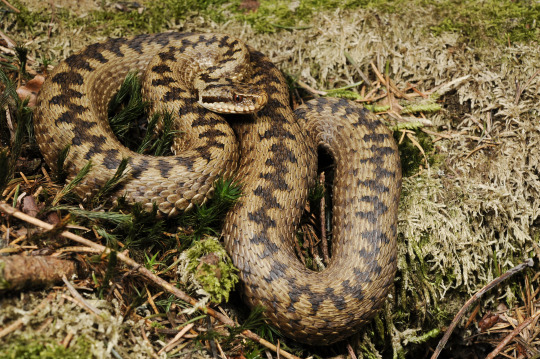
Marluxia - asian vine snake - This snake has an extraordinary geometric pattern to it scales. This pattern is highlighted when the snake feels threatened and expands its body, revealing the black and white between the green scales. When relaxed, the snake has what looks like a very slender, nearly all green body.

Larxene - eyelash viper - Named for the scales that stand out above the eyes, this species is both a highly venomous and highly beautiful snake. Luckily it avoids interactions with people when it can, striking only if threatened. Because their scales are keeled, they are particularly rough to the touch, but the adaptation may help protect them against the branches they climb while looking for a meal.

Roxas - scaleless corn snake - Corn snakes have a docile, gentle nature and this feature combined with their beautiful patterns have made them popular as pets. Scaleless snakes have few or no scales on their bodies, though they typically always have the ventral scales on their bellies which help them to move across various terrain. Scaleless-ness is a natural genetic mutation and has been witnessed in the wild.

Xion - eastern ribbon snake - a nonvenomous species of garter snake that is renowned for its slim body, sleek scales, and lateral body stripes. The ribbon snake can be found in wet climates such as creek-beds, streams, lakes, wet woodlands and marsh areas.

#snakes#image headcanon#organization xiii#organization xiii headcanons#kingdom hearts#kingdom hearts headcanon
39 notes
·
View notes
Text
Jacques and his Scales
Right so more musings for you lovely people! This time some anatomy for our friendly neighborhood dragon man! Jacques doesn’t really have one ‘set’ type of scale for him in either Dragon or Normal form. His body has them broken down in sections and the scales basically work with his anatomy.
This post is going to be fairly long with lots of pictures so I’ll keep it under a cut to avoid a HUGE wall of everything in your faces :3
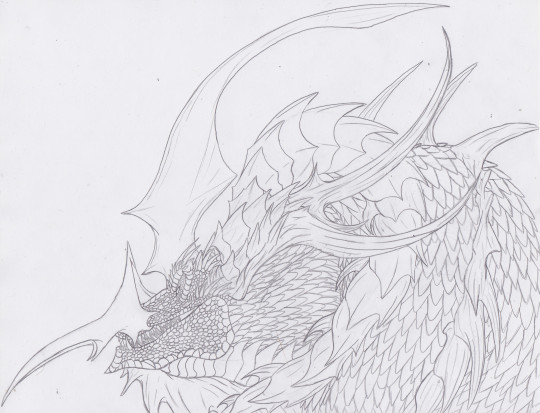
Let’s break down the scales of his dragon form shall we? Well first off, one will notice that the scales on his face are very different from those on the neck and rest of his body.
The scales on his face are finer and more circular in appearance save for a couple spots like around his eye ridges, the base of his horns (Which are spiked rather than flat against his head) and along the lip and jaw lines where they are thicker and a bit more plated. This goes for both his normal Au Ra form as well as his dragon form. Think of his facial scales as well like that of a Gecko really.

The scales on his neck are Keeled scales which are most commonly seen in colubrid snakes with the lower part being thick plated scales that many people put on their fantasy dergin critters obviously. Though these plated scales can be seen as just more ‘armored’ versions of the belly scales for snakes.
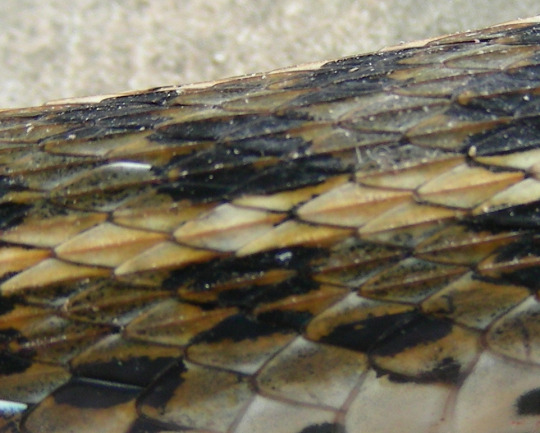
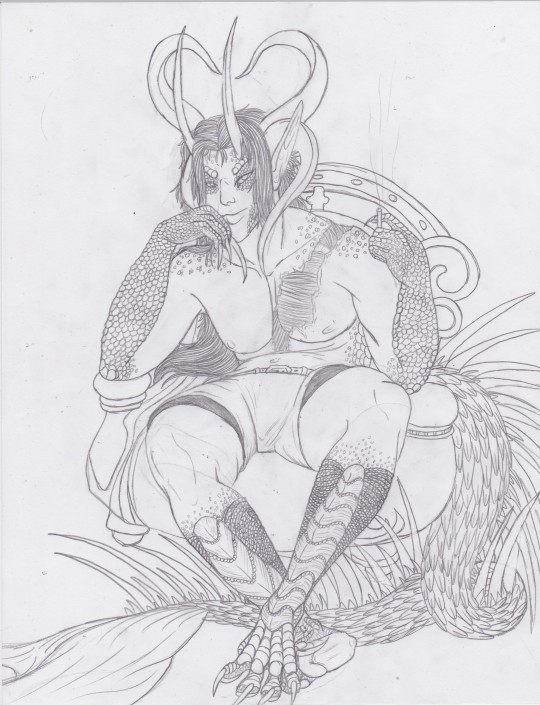
Here we have the dergin in his ‘Au Ra’ form. As you can see many similarities are here between this form and that of his dragon form. Specifically the way his facial scales, arm scales and most of his leg scales form. They are all small, fine scaled areas much like the Gecko scales mentioned above. His tail scales are the same keeled scales like those on his neck. But I wanted to point out a couple things that are more visible here than on the various dragon pieces I’ve done of him that show here as well as on his dragon form.
First off, his feet. His feet (as well as the backs of his arms really) are more like that of Avian scales with the large plating along the fronts (or the backs in the case of his arms) whic give it that overall appearance.

The other thing which can be more seen in his dragon form but applies to both forms as well. Jacques’ back is completely covered in scales and these scales are akin to the scutes of most crocodilians. He has small spines that pair up with the scales on his back and for his scales on his back they actually have small fragments of bone under them that are like tiny hooks to hold them in place. His scutes are very prominent and bony on his back however and are very tough. Which makes actually ‘shedding’ them a pain in the ass.

Lastly the end of his tail has the large scutes on it like our friendly sleepy gator up above!

So yes, in short. I draw a lot of inspiration from real world critters when it comes to Jac’s scales and their anatomy. The ones along his back are generally the ones I try and put the most detail into because they are the most ‘armored’ on him while he is in his normal Au Ra form. The bones under the scales on his back draw on certain fish (if I recall correctly) having such anatomy!
#FFXIV#FFXIV RP#Mateus#Mateus RP#Mateus Server#Dragon Knight Speaks#Ramblings of a Dragon#Jacques#Jacques Cresent#Au Ra#Au Ra Xaela#Xaela#Jacques Anatomy 101#Jacques Headcanons#Scale Anatomy/Scales#Long Post#Text Post#My Artwork
7 notes
·
View notes
Note
whats "stargazing" in a snake? i saw it mentioned on Snake Discovery but they didnt say what it is or what causes it
Stargazing is a symptom of severe neurological disorders that we see in some snakes. It's most often seen in colubrids like cornsnakes, but does occur in other families.
You'll sometimes hear about "stargazer syndrome" in cornsnakes, but stargazing is not a disorder or disease in itself, it's a symptom. Stargazing is often a cluster of symptoms - the main one is contraction of cervical muscles that causes the snake to look up (called "stargazing"), and this most often presents along with balance issues and a general inability to right themselves that mean the snake will probably spend a lot of time laying on their back.
Stargazing looks like this. Note the very stiff neck and the way the snake is laying belly-up.

Stargazing is usually a symptom of neurological issues. It could be neurological problems the snake was born with, or due to later illness or injury. Pythons and boas with IBD will often stargaze in the later stages of the disease. In older snakes who suddenly stargaze, I find it's often due to exposure to too-high temperatures causing neurological damage. By the time a snake is stargazing, it's most often a sign that something is very wrong, and it should be treated as an emergency.
Now, it's super easy for snake owners to freak out a bit whenever we see our snakes looking up because stargazing is so serious and scary! But here's the thing I always tell people about stargazing - if you have to ask if your snake is stargazing, your snake isn't stargazing. It's a sign of neurological issues severe enough that you will notice symptoms other than stargazing. Obviously, take your snake to the vet if you think anything's up, but the thing about stargazing is you will usually know it when you see it. There's really no mistaking it.
164 notes
·
View notes
Note
In your experience what is the temperament of Western Hoggies like? Like in comparison to a BP, Rosy Boa, Corn Snake, or King Snake?
Hognoses tend to be a mixed bag. The vast majority of mine are docile but hissy. Some of mine are jumpy and will close-mouthed strike at you when you go to take them out of the cage too. In general though they’re pretty tolerant of handling and relax a lot once they realize they’re not going to be fed.
Compared to the snakes you mentioned....
Ball pythons -> Hognoses are more active and interactive compared to ball pythons, though they’re not always as easy-going and.. cuddly? I guess might be a good word? Like ball pythons tend to be content to just sit in your lap but a hognose will get antsy a lot quicker. Another important thing to note is the difference in how it feels to handle a hognose compared to a python or even other colubrids. Hognoses are not constrictors and have little to no grip strength so they don’t really hold onto you when you hold them and can be awkward and uncomfortable to handle for people not used to them.
Rosy boa -> I don’t have much experience with rosy boas beyond handling a few and basic research so I don’t really know how they compare. Most rosy boas I’ve interacted with have been very calm and not hissy.
Corn snakes / king snake -> Just going to lump them together haha. Corns and kings are (typically, a few species are exceptions to the rule) much more interested in climbing and moving compared to hognoses. They feel more like actual snakes when you handle them too haha
Basically, hognoses are kind of unique in personality and how they feel to handle them. Some buff a lot, some are cupcakes, some want you dead. If you’re interested in getting a hognose but worried about temperament I would recommend trying to find an adult that you can handle beforehand to get a basic sense of their personality.
I may go make a quick video to illustrate the differences in movement and temperament with a few of my hogs and corns. We’ll see
13 notes
·
View notes
Text




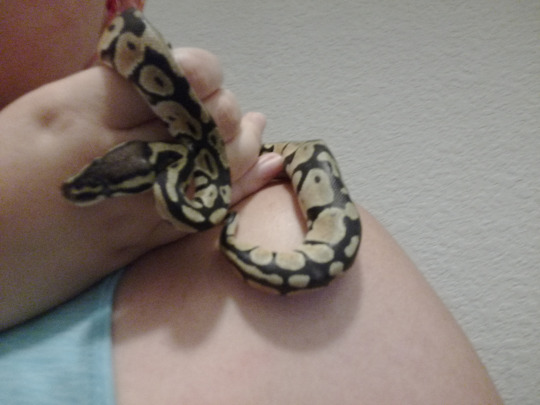

Hey! Can anyone who knows about ball python morphs help me out? This little thing was being sold as a “fancy” ball python at petsmart. As you can see it’s super thin and all these pictures were after I spent 4 hours soaking and rubbing off a horribly stuck shed on it’s entire body. It is a true rescue, I spent 0$ on this snake. It was adopted to me after I pointed out to the employees just how bad it was doing. (honestly I don’t blame the employees, I know them there and they were assist feeding it and doing everything they could it just really wasn’t thriving there and there wasn’t much they could do with the policies at the store, they thanked me heavily for taking it)
I’m not really well versed in ball python morphs (this is my first ball python, I’ve done lots of research but I wasn’t really planning on getting one at the moment. It was just the extreme circumstances of this little guy who’s been at the store for months apparently) My best guess is a pastel? One of the employees mentioned spider but I really don’t see it. I have no intentions of breeding it after it grows up (it has mystery genes, also I don’t have interest in breeding in general) I’m just really curious. Also, if there’s anyway to tell sex with ball pythons. I know with colubrids like my corn snake (Popcorn) he’s been sexed by his breeder but he also has a very long and thin tail. I’m not sure if there’s anyway to tell like that unless you get it probed (also the snake’s name is Blueberry and it’s already eaten on it’s own the day I brought it home, it’s weak but doing better and I’m very happy)
@wheremyscalesslither @william-snekspeare I’m not really sure who else to tag? If anyone can help though please respond to this post or send me an anon or something, I love this little thing very very much and am curious as to what morph it’s supposed to be
#ball python#morph#reptiblr#snekblr#its name is blueberry cause it's eyes are kinda blue and it was the first thing i noticed when i saw it#then the horrible shed and wrinkles all over#i yoinked this baby so quickly#its in a 10g for now but im getting the supplies together to move it to a nice decorated 116qt like my corn has#im also going to try and feed every 4-5 days with a hopper mouse#i know it should be on rats but none of the stores near me sell them and i cant drive so i have to deal with how far my parents are willing#to drive#im going to save up to buy wholesale rats online or at a repticon or something so it can get on rats soonish
46 notes
·
View notes
Text
I love snakes. If I ever do get a pet snake I definitely want some kind of american/north american colubrid. My top pick is western hognose but milk snakes are super cute too.
Other than that I do really like sand boas. As much as I love pythons I think I’d prefer a smaller/lighter snake, generally. The only BIG snake I kinda want is a green anaconda bc like. Go big or go home i guess??? Thats like. An almost definitely never gonna happen kinda thing tho. I prefer the little cuties.
9 notes
·
View notes
Note
so dumb question, I shouldn't be worried my 6 yo snake isn't the same size as her parent? I'm always concerned, just because she seems so small but like I don't power feed, I feed every 2-3 weeks in a medium sized meal.
Hmm. Okay so I'm going to go out on a limb here and assume you're keeping a python or boa?
Adult non-breeding colubrids should be eating every 7-14 days, depending on body condition, activity levels, and season. If you've got a corn or rat snake (my area of focus) then 2-3 weeks is definitely too long a span and will result in stunted growth and potential health problems.
If we're talking about a ball python, which I really hope we are, then it depends on how long she's been on that feeding cadence, what her genetic growth potential is, and the biological sex of the snake if you're not 100% sure already. Males will generally be smaller and lighter-bodied than females. Fancy morphs and heavily line-bred snakes may have smaller body size than outcrossed or wild-type snakes, so that's something to keep in mind also. Baby ball pythons should start on a 5-7 day feeding schedule with meals being slowly spaced further out as the snake grows. 2-3 weeks between meals is fine for a nonbreeding adult but if she's been on that schedule since she was a hatchling that's going to have long-term ramifications. A consistent prey size estimate is about 10-15% of the snake's body weight. It's a good idea to take a monthly weight reading for all reptiles and keep records of growth over time, and evaluate your prey size from time to time, too. I don't trust pet store feeder size estimates because I've watched first hand as "medium" feeders decreased in size as pandemic price inflation hit feeder producers. A "medium" frozen rat right now is what I would have called a "small" two years ago.
If you're concerned about your snake's size or body condition, I recommend a check-up with your veterinarian to make sure your snake is healthy and within appropriate size and weight range for their age and species. At best you'll get some peace of mind, and at worst you'll get some solid advice and a plan to address your snake's overall health and well-being.
#Reminder: I'm not a medical professional#I can't give medical advice beyond Go To A Vet#answers to questions#text post#long post#snake#snakes#reptile#reptiles#reptiblr#also if you don't tell me a species I'm probably going to assume corn snake#this is a corn snake and sometimes rat snake tumblr#I love all snakes but I don't know as much about boids#snake keeping#snake husbandry#snake feeding#snake care
36 notes
·
View notes
Text
@hunterx700 replied to your photoset:
Grabbed a few cruddy cell phone shots while I was…
If you don't mind me asking, why did you get a WC animal? Is it because of the unbelieveable pink? Not trying to be rude, just genuinely curious
That’s a valid question, not rude at all! :)
I usually don’t support buying WC animals unless you REALLY know what you’re doing. Often they don’t thrive and will perish either due to parasites or to the stresses of acclimating to a captive life. This is most common with species like tree boas, small/arboreal colubrids, vine snakes, etc.
Luckily, boa constrictors are pretty hardy and tend to adjust well. Also luckily, they don’t tend to harbor the super-exotic, tenacious parasites that you find in other species (looking at you, Gonyosoma lung worms!). My new girl has been treated inside and out, and is thoroughly free of anything nasty. I do intend to keep up with routine fecals to make sure nothing slips through the cracks. Because of her health history and my ability to attend to any necessary medical surprises, I felt comfortable bringing her into my collection. However, I wouldn’t have done so if she was fresh from the field and not established.
And yeah, I was definitely woo’d by her exceptional colors! It’s super difficult to find that level of saturation in the currently available lines of Suriname boas. There is also the added bonus of fresh genetics - all the color, without the generations of line breeding (aka inbreeding).
10 notes
·
View notes
Note
Hey there, I was directed to your blog after asking some snake questions around tumblr. I saw that you have a long list of resources for ball pythons, and was just wondering how much of it could apply to corn snakes? I'm probably gonna have a baby corn snake fall into my care in the near future and I wanna be as prepared as possible for when it's ready for the big move. My only experience w reptiles is leopard geckos so any advice is appreciated!
This is hard for me to answer in a straightforward way Haha
The general information can apply to most, if not all other terrestrial snake species, and it should be fairly obvious what is ball python specific information and what can be more broadly applied.
Some examples I'm thinking of are:
"55% minimum humidity, 65-70% ideal" is a ball python specific thing
"Not very active, nocturnal species" ball python specific
"They have slow metabolisms, and sparse infrequent feedings are best for this species" the jury is still out on that one for colubrids, but I'd argue they still need more frequent feedings than a ball python.
Whereas something like:
"Climbing is excellent enrichment that promotes healthy body condition by building muscle and staving off fat"
Or
"Here's how to remove stuck shed"
Are more general snake things.
Moreover, if we look at something like the "Measuring Temperatures" write up, there's really good information in there that pertains to general reptile care, like the difference between ambient and hotspot measurements and what tools to use, but obviously you wouldn't want to keep a corn snake at ball python temps lol
I hope that answers your question. I get this one a lot and I was never sure how to repsond.
128 notes
·
View notes